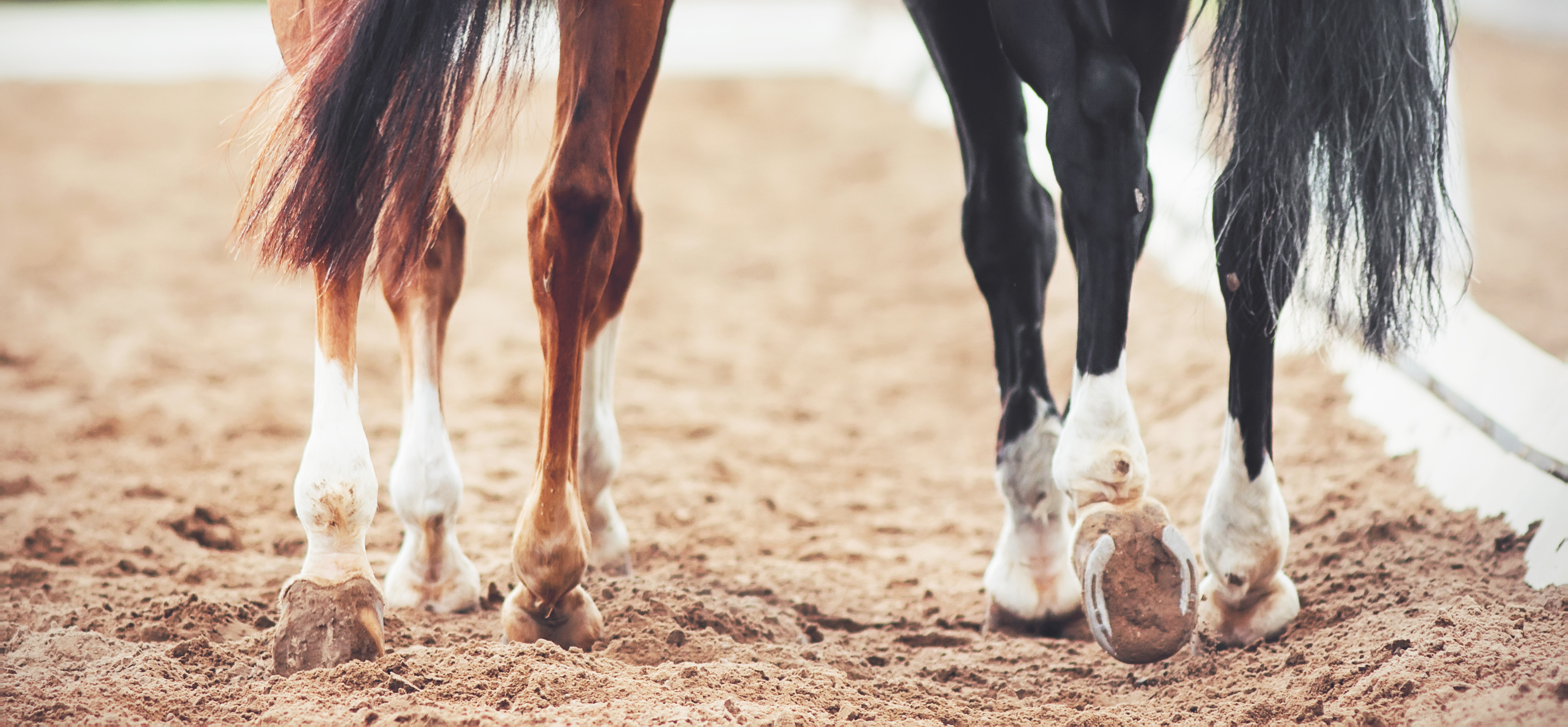Home > Horse Care > Less than perfect gaits in horses
Less than perfect gaits in horses
- April 8, 2024
- ⎯ Equus
In an ideal world, horses’ feet would all be straight shooters. Hooves that leave the ground symmetrically, travel straight through the air and land flat produce efficient movement with minimal stress on leg bones and joints. Horses inhabit the real world, however, where their foot-flight patterns often deviate from the ideal.

Dishing is the term used to describe an inward swing of the hoof with each stride; winging and paddling describe outward-swinging foot flight. Angled “hinges” in the knees, fetlocks or, very rarely, the feet produce these deviations from straight forward-and-back motion.
Click here to learn what noisy joints may mean.
You can pinpoint the deviant joint by manipulating the horse’s legs. Pick up your horse’s front leg, and fold it back at the knee. If the knee is straight, his hoof will come up square behind his elbow; if the hinge is rotating unevenly, the hoof will swing to the inside or outside of the elbow. To check the fetlock, pick up and hold the leg just above the fetlock, and move the hoof up and down to rotate the joint. If the joint is straight, the hoof will describe a truly vertical arc; otherwise, the hoof will follow a slanting path.
Hind-end gait abnormalities don’t have such tidy names, but they exist nevertheless. Stand behind your horse as he trots, and watch for marked twisting of the hooves as they leave the ground, or “swiveling” through the hocks during weight bearing. (Subtle rotations occur naturally between joints to enable the stifle to clear the belly as it advances.) You can test the hind fetlock joints for straightness just as you would the front fetlocks, but hocks can’t be flexed as readily as knees, so with them you’re better off using your eye as the gauge of true movement.
Assuming your horse is properly trimmed and shod, should you try to correct flawed foot flight? Not unless you want to upset the delicate balance that most imperfectly made horses have worked out for themselves. A horse who dishes, paddles or swivels through the hocks may or may not perform as well as his straighter-going peers, but if he’s moving along soundly, his less-than-perfect parts have developed a system of compensation to get the job done. Though gait deviations are usually a disadvantage in the showring or on the racetrack, most have few, if any, ill effects on horses. Extreme dishing is the exception; because it can cause interference injuries, it’s a good idea to use protective splint boots on horses who have this gait abnormality.
Don’t miss out! With the free weekly EQUUS newsletter, you’ll get the latest horse health information delivered right to your in basket! If you’re not already receiving the EQUUS newsletter, click here to sign up. It’s *free*!





